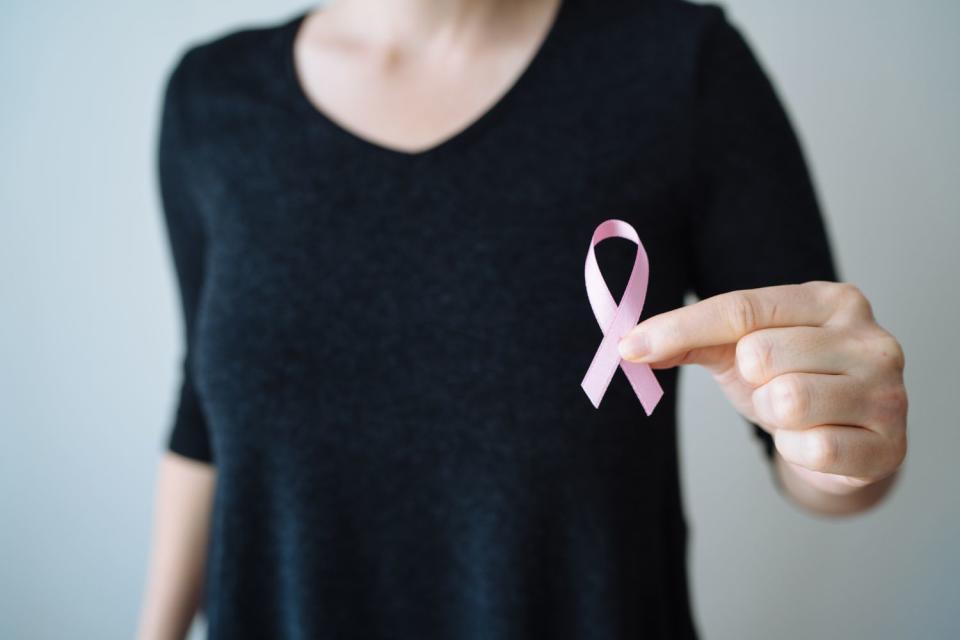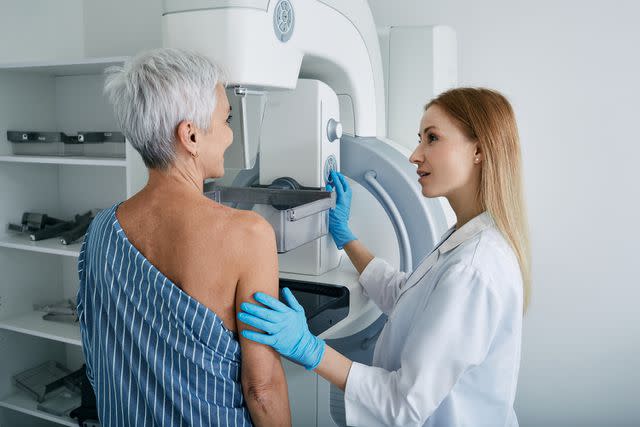New, Less Invasive Breast Cancer Treatment Involving Freezing Could Replace Surgery for Some Patients
"For patients who have larger tumors but can't undergo surgery, this approach could be more effective," interventional radiologist Yolanda Bryce, M.D. said

Getty
Breast cancer awareness -- stock imageBreast cancer patients who were previously unable to undergo surgery for treatment may soon have another, less invasive option.
The process, called cryoablation, uses imaging guidance such as ultrasound or a computed tomography (CT) scan to locate tumors, per a press release shared by the Society of Interventional Radiology late last month.
Related: ESPN’s Hannah Storm, 61, Reveals Breast Cancer Diagnosis: 'I Had No Signs' (Exclusive)
Once the tumors have been located, a radiologist then inserts small, needle-like probes into the breast to create an ice ball that surrounds the tumor, killing the cancer cells.
According to the release, tumors can potentially be “100% destroyed” when this option is combined with hormonal therapy and radiation.
"For patients who have larger tumors but can't undergo surgery, this approach could be more effective than the current standard of care for patients who are not surgical candidates," said Yolanda Bryce, M.D., an interventional radiologist at Memorial Sloan Kettering Cancer Center in New York.

Getty
Memorial Sloan Kettering Cancer Center, New YorkFactors that could prohibit a person from being able to undergo a surgical procedure can include age, heart disease, high blood pressure, or hypertension.
The individual may also opt out of surgery if they are already a chemotherapy patient.
In the instance that the tumors do continue to grow, “patients can be treated with cryoablation multiple times to control growth,” the release states.
Researchers at Memorial Sloan Kettering Cancer Center conducted a study with 60 patients who received cryoablation treatment. Of those individuals, only a 10% recurrence at their 16-month follow-up visit.

Getty
mammography scan -- stock image"When treated with only radiation and hormonal therapy, tumors will eventually return. So, the fact that we saw only a 10% recurrence rate in our study is incredibly promising,” Bryce said.
"Surgery is still the best option for tumor removal, but there are thousands of women who, for various reasons, cannot have surgery," Bryce continued. "We are optimistic that this can give more women hope on their treatment journeys."
Related: Olivia Munn’s Breast Cancer Risk Assessment Score 'Saved My Life' — What to Know About the Tool
The study’s patients who received cryoablation did so with local anesthesia or minimal sedation.
The procedure took around 30 minutes, and patients were able to go home on the same day once their treatment was complete.
Last week, the study was presented at the Society of Interventional Radiology Annual Scientific Meeting in Salt Lake City.
Never miss a story — sign up for PEOPLE's free daily newsletter to stay up-to-date on the best of what PEOPLE has to offer, from celebrity news to compelling human interest stories.
"For a long time, cryoablation has been used to treat smaller breast tumors (classified as under 1.5 cm), but this study shows that cryoablation can actually be effective for patients with larger tumors as well," Bryce told Fox News Digital.
She said the current biggest risk of the procedure is damage to the skin, also known as a "skin freezer burn” — and the ones who have experienced it were successfully treated with a skin ointment and pain control.
For more People news, make sure to sign up for our newsletter!
Read the original article on People.

